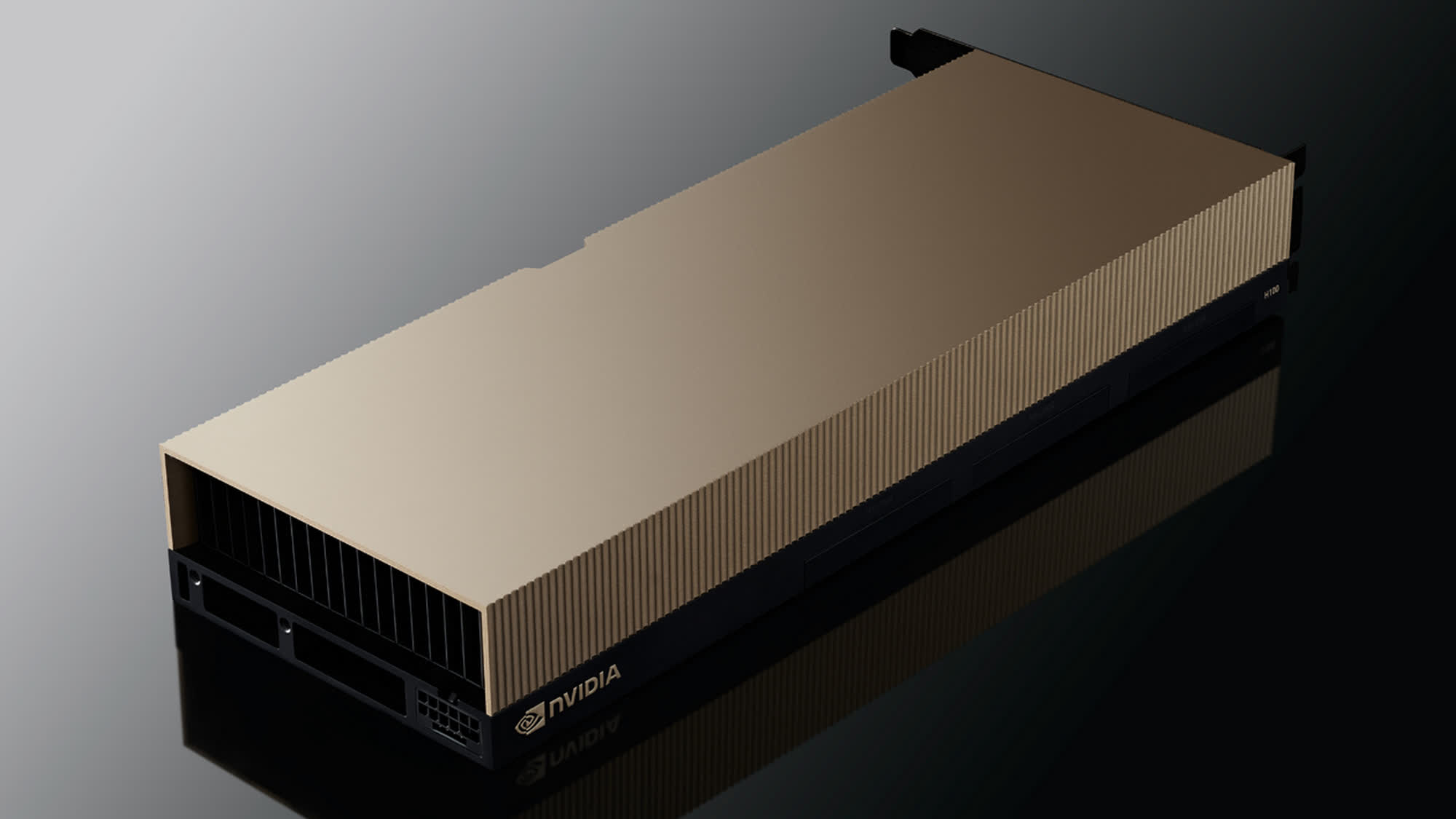What just happened? Nvidia's H100 Hopper GPU has been benchmarked in games, and the results are anything but impressive. In the 3DMark Time Spy benchmark, the card was only able to notch up 2,681 points, which falls short compared to the 2,710 points scored by the Radeon 680M integrated graphics chip found in AMD's mobile Ryzen processors.

The results were just as underwhelming in real-life games, as the card couldn't even hit 30fps at 1080p high settings in Red Dead Redemption 2. At 1440p, it could only notch up an unplayable 8fps. The tests were performed by China-based YouTuber Geekerwan, who got access to not one, but four H100 cards from Nvidia and promptly tested their gaming potential.
The H100 costs more than $30,000 apiece, so the low graphics grunt could seem disappointing at first glance. However, compute GPUs are specifically designed for AI and HPC workloads, and aren't intended to render graphics. That's why only 2 of the TPCs in the H100 are available for traditional graphics processing tasks, while the rest are dedicated to computational workloads.
The Hopper H100 features a cut-down GH100 GPU with 14,592 CUDA cores and features 80GB of HBM3 capacity with a 5,120-bit memory bus. The GH100 GPU in the Hopper has only 24 ROPs (render output units), while the gaming-oriented GA102 in the RTX 3090 has 112 ROPs, making it a much better option for graphics rendering.
The unimpressive gaming performance is also due to the presence of only 24 bitmap GPU units in the H100, while the RTX 4090 has 160 pieces. Additionally, these accelerators lack optimized game drivers, which further explains their subpar gaming performance. It is worth noting, however, that the PCIe version of the H100 Hopper comes with the PCI Express 5.0 interface, while the RTX 4000-series cards remain on PCIe 4.0.
Thanks to the availability of the PCIe versions, the H100 can theoretically be used in a regular desktop PC. However, it's unlikely that many people will be doing that, seeing as they're meant to be used as AI accelerators in data-centers, and not as gaming GPUs at home. People looking for the best gaming performance would do well to stick to specialized gaming GPUs from either Nvidia or AMD that barely cost a few hundred dollars. Even flagship models like the RTX 4090 can usually be purchased for around $1,500.